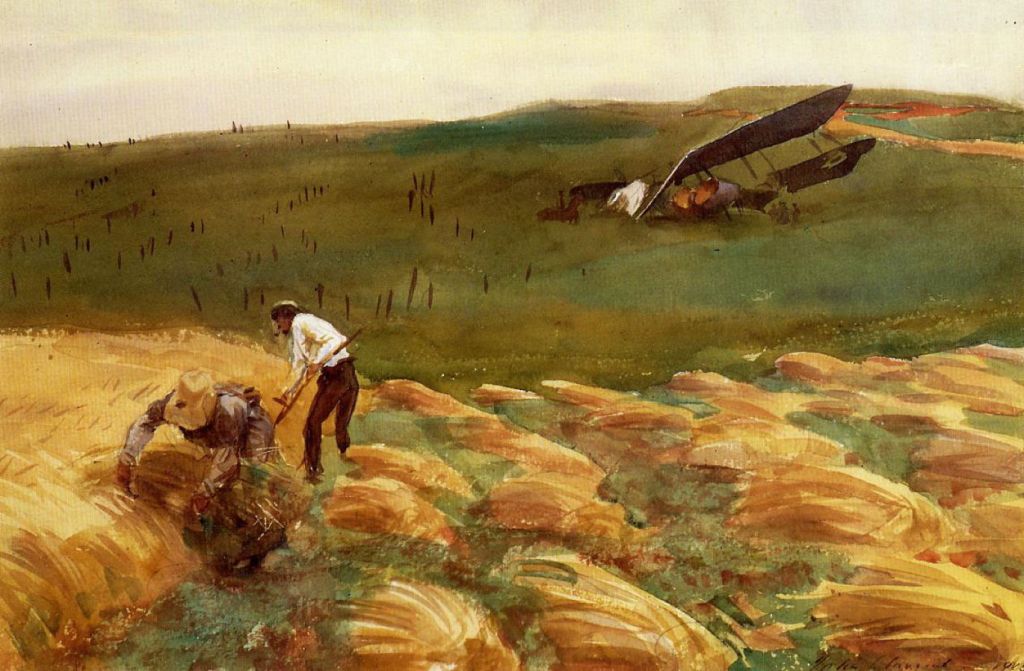Since the flurry of paintings showing early ballooning in the late eighteenth century, painters had left it to photographers to capture pioneering achievements of aviation. Then, on 25 July 1909, the Frenchman Louis Blériot was the first person to fly an aircraft across the Channel, from France to England.
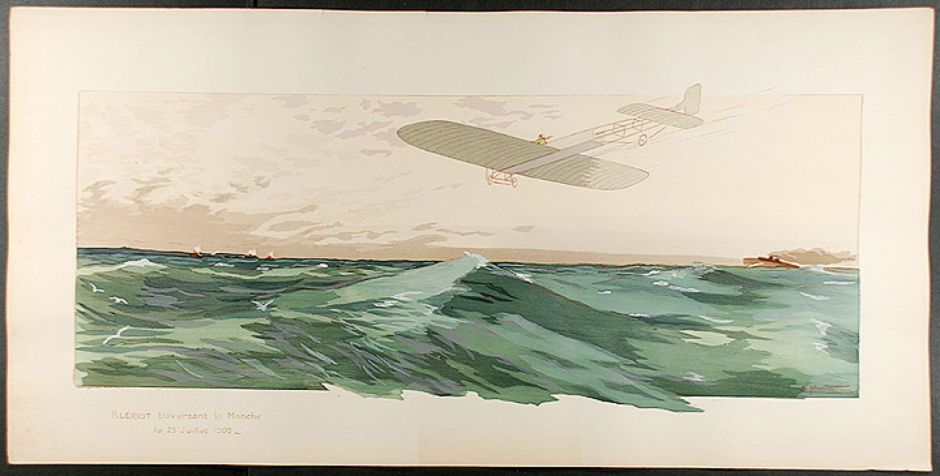
There were many prints made claiming to show Blériot’s great achievement. Ernest Montaut’s Blériot Crossing the Channel on 25 July 1909 (1909) is particularly poignant, as Montaut died later that year at the age of only thirty-one. This is a hand-coloured pochoir print, one of Montaut’s specialities using a lithographic stone.
Montaut was best-known as a poster artist, and is believed to have been the first graphic artist to use speed lines and perspective distortion, derived from photography, to depict rapid movement. Both techniques are shown here.
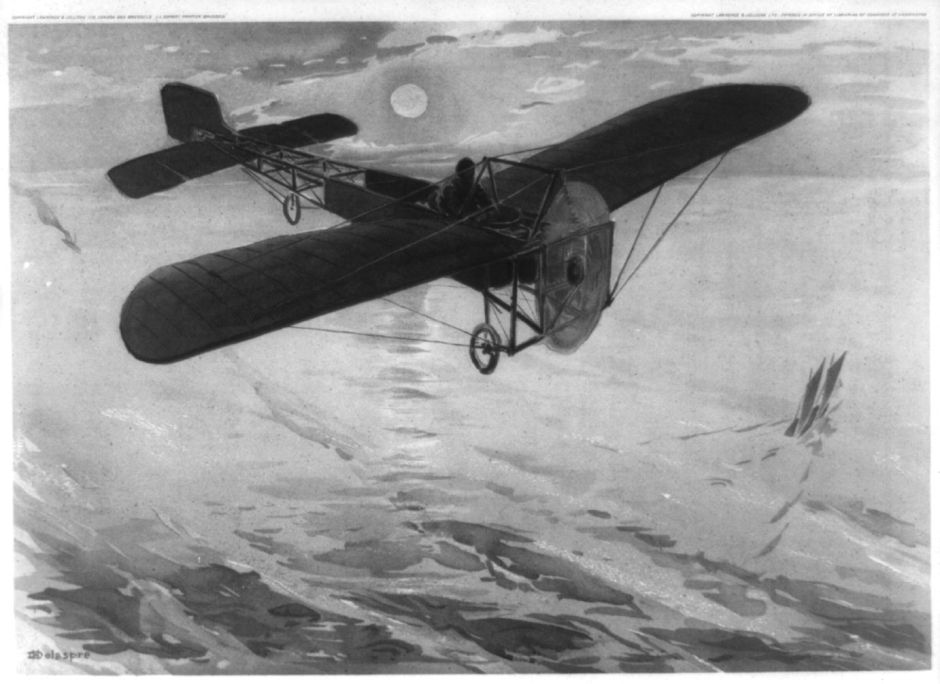
H. Delaspre’s chromolithograph of The Channel Flight. Blériot, July 25th 1909 (1909) is another of the better prints produced at the time. In contrast to Montaut, he did not use any devices to signal that the aircraft was moving at speed, apart from showing a propellor disc, and it accordingly looks quite static in the air.

Henri Rousseau had been ridiculed during his lifetime, but one artist who took him seriously and appreciated his paintings was Robert Delaunay. In the last couple of years before the First World War, Delaunay painted at least two works inspired by early aviation. Sun, Tower, Airplane from 1913 brings together two of the symbols of the early twentieth century: the Eiffel Tower in Paris, which was opened in 1889, and a Wright type aircraft in flight.
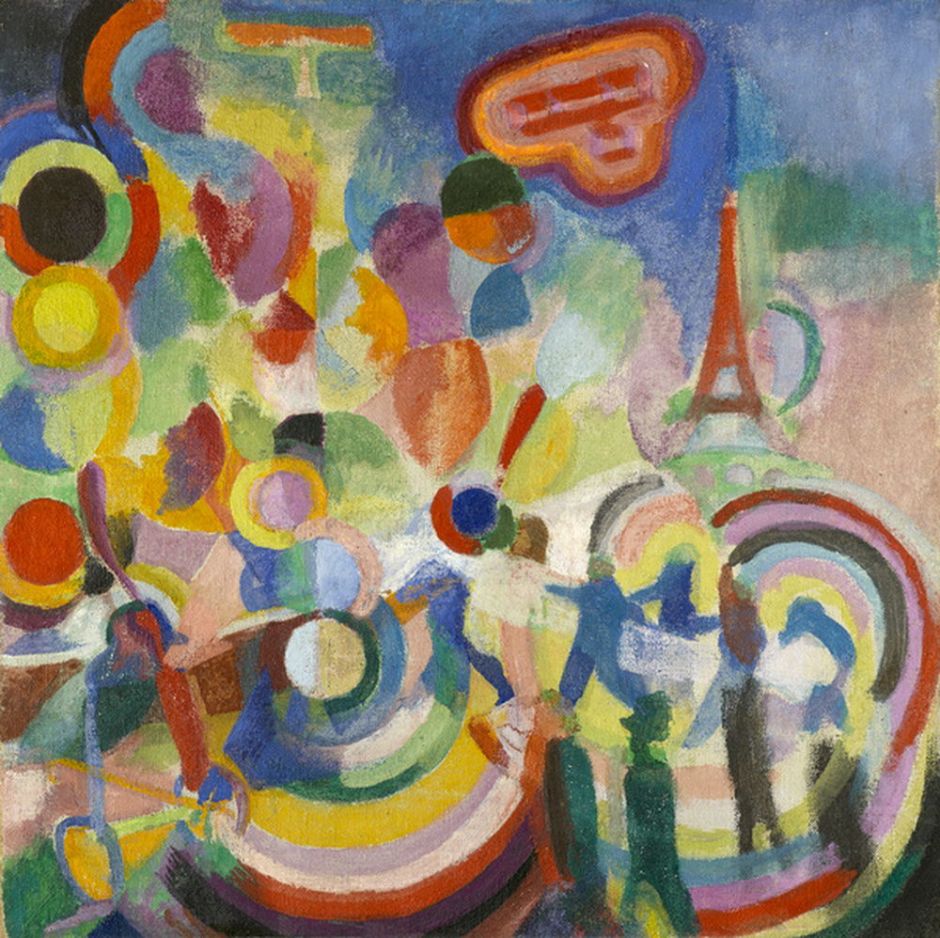
The following year, Delaunay painted his Homage to Blériot (1914). The Eiffel Tower appears again in the top right corner, and a brilliantly-coloured image of Blériot’s distinctive monoplane in the lower left.
The First World War was not the first in which aircraft played a role in combat. Balloons had even been used in the American Civil War, but most of the aviation firsts were set by the Italo-Turkish War of 1911-12: the first aerial reconnaissance flight, first aerial bombing, and first aircraft shown down by rifle fire.
The First World War was painted by a large number of war artists, many going to the front, and some very accomplished painters. Its scale, devastation, and sheer inhumanity were hard to depict in photographs, and the many fine paintings of the war form its most vivid visual record.

Eric Walter Powell’s view of BE2C Aeroplanes over the Somme from 1916 is one of the first paintings to show the world above the clouds. Although people had become used to aerial views from mountains, when the first aerial photographs were made in about 1885, they showed the earth in a completely novel way.
Here, Powell shows this unfamiliar landscape/cloudscape with its oblique view of the ground below, and scattered small cumulus clouds of a fine day.
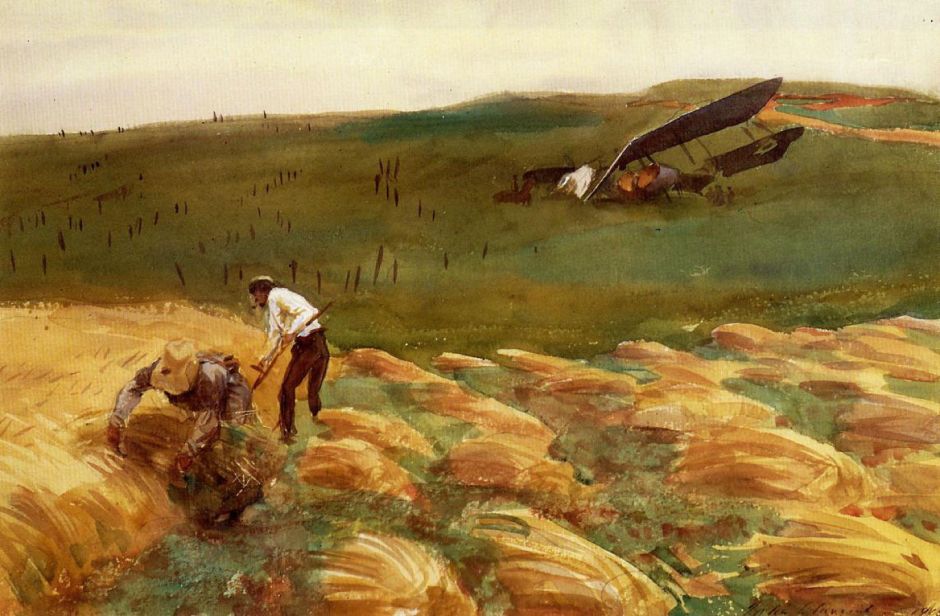
One of the most famous paintings of aviation during the war is John Singer Sargent’s Crashed Aeroplane (1918). Two farmers get on with the harvest, with a crashed British biplane planted in a hillside behind.
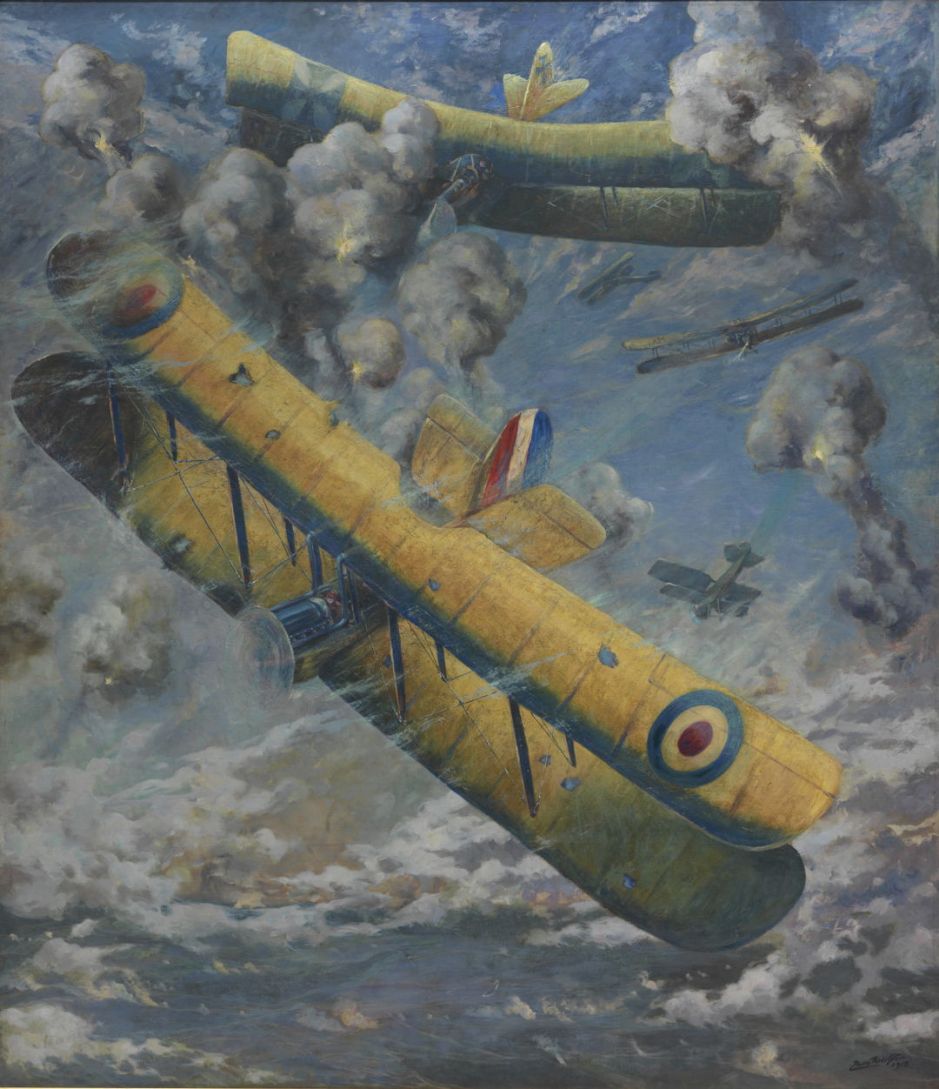
Louis Weirter’s An Aerial Fight (1918) is one of the first paintings showing the war in the air, as British and German biplanes fight among scruffy clouds. Comparison with Montaut’s use of speed lines from ten years earlier shows how static aircraft in flight look without them.
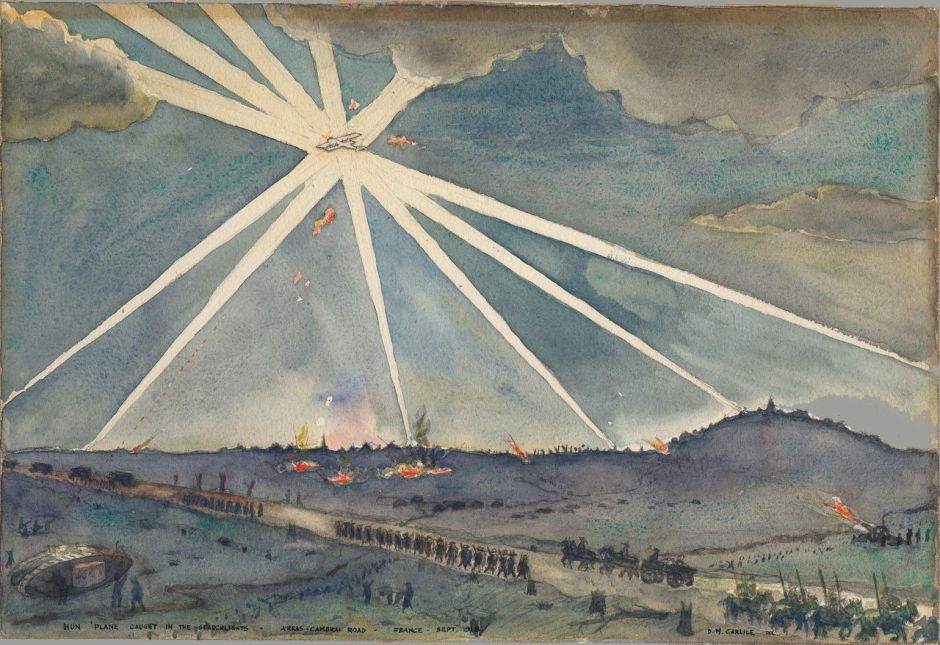
David M Carlile’s Hun Plane Caught in Searchlights – Arras-Cambrai Road – France – Sept 1918 (1918) is an atmospheric watercolour showing a scene from the final months of the war. I have been unable to discover anything about the artist apart from the fact that he was a Private at the time.
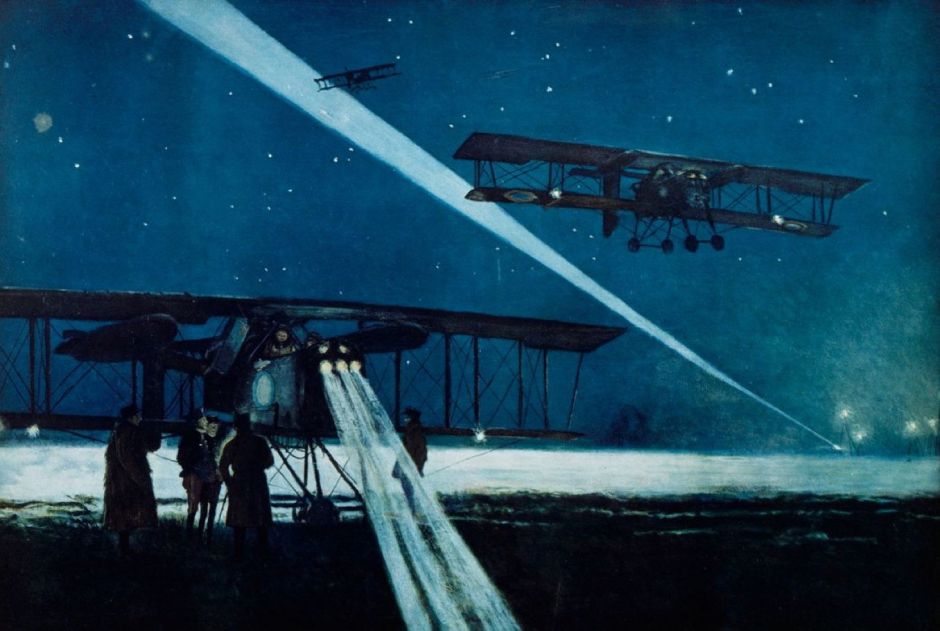
François Flameng’s superb watercolour of Return of a Night Bombing Flight of Voisin Aircraft from 1918 is perhaps one of the best paintings of the war in the air. Flameng was a very successful portraitist, and a close friend of John Singer Sargent and Paul Helleu, who distinguished himself during his time as a war artist.
With the war over, painting was hurtling into modernism, and hardly an appropriate place for motifs such as aircraft or flight.

Paul Klee painted some exceptions to that, in at least two paintings showing a balloon. Red Balloon from 1922 has made using oil paint and probably some sort of transfer process onto a gauze which had been primed using chalk, like a gesso. The red balloon of the title is shown as a circular disc amid other geometrical shapes.

Four years later, Klee turned to a modification of that motif, in his Der Luftballon (1926). Here his board was primed in black, and appears to have extensive graffiti.
My last artist is even more recent, a war artist of the Second World War whose paintings came to explore the skies above us: Paul Nash.
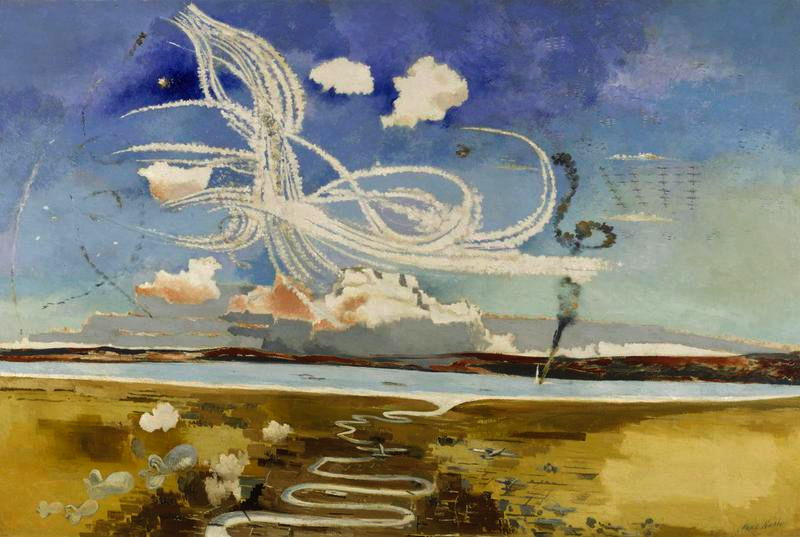
The startling distant view in Nash’s Battle of Britain (1941) incorporates many elements of air warfare, including vapour trails (contrails), smoke marking the spin and crash of a downed aircraft, formation flight, and defensive airships. Below this action are the low hills, estuary, and a winding river typical of much of the English south coast.
By emphasising the forms and patterns made in the sky, as seen from high above the ground, Nash increases the distance from this air war, detaching the story of the battle from the people involved.
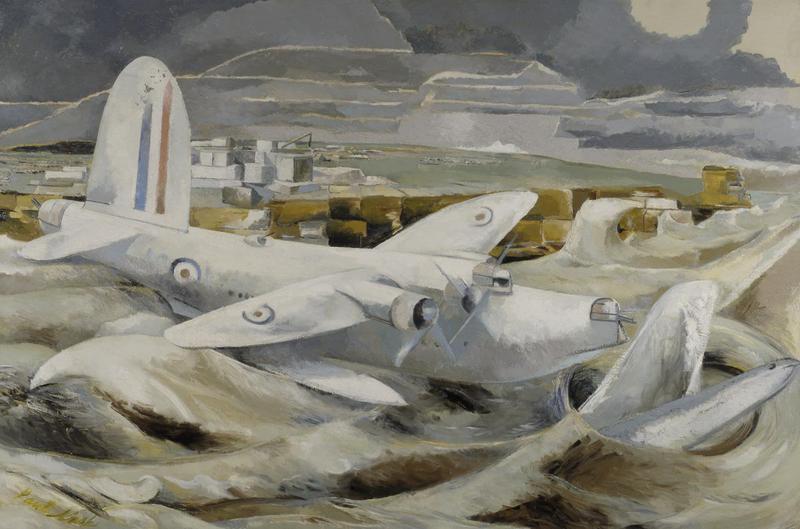
Using another aerial location, Nash’s Defence of Albion (1942) shows a Sunderland ‘flying boat’ operating in rough seas off the Portland, Dorset, coast; cues for the location are given by the large blocks of limestone from the quarries in the distance. Among the duties of these aircraft were anti-submarine patrols, and part of a German U-boat is shown in the right foreground to emphasise this (in an unreal composite).
When I started to research these two articles, I had expected to discover many works in the final decade of the nineteenth and the early twentieth centuries which showed pioneer and early aviation. I remain surprised at how few paintings there are, at least until the First World War. Perhaps flight was too modern for most Impressionist and Naturalist artists.

